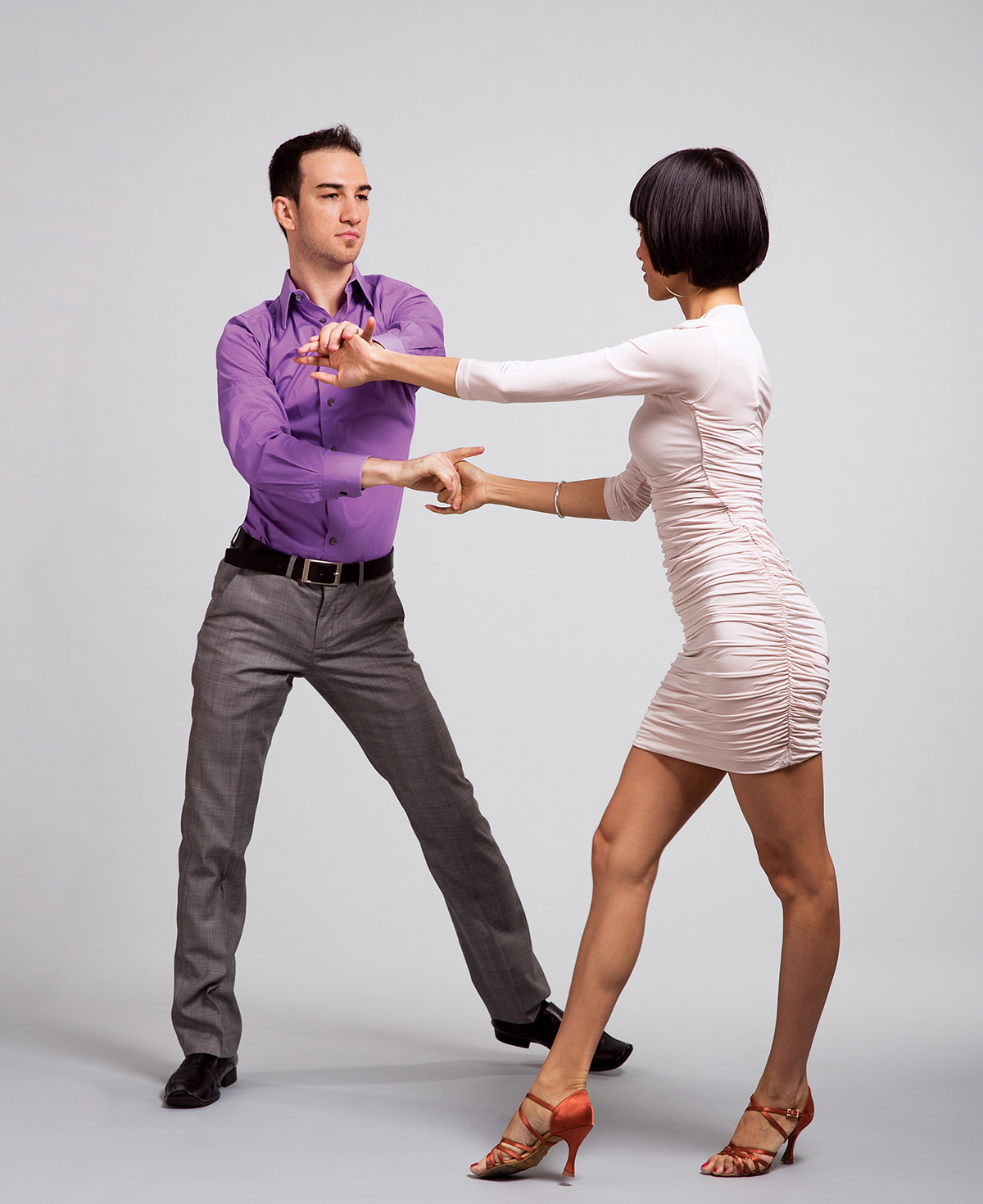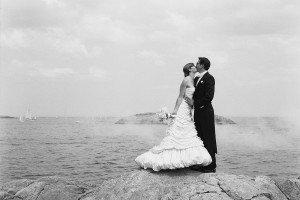The Moves Maker

photograph by trevor reid
Leon Turetsky’s parents wanted him to be an accountant, but he had other plans. The Belarus native, who started dancing when he was just 12 years old, landed an “extraordinary ability” work visa after graduating from college, and began teaching at Cambridge’s Extreme Dancesport. These days, the one-time backup dancer (he appeared in the Antonio Banderas film Take the Lead) teaches nervous brides- and grooms-to-be all the right moves from the comfort of his own Newton studio. “Many couples have told me that learning to dance has been one of the best parts of planning the wedding,” he says, “because they got to spend time learning something fun together.”
How can couples without much dancing experience get started?
First, they should narrow down the song choice and then figure out how much time they are willing to put into learning the dance. Some couples can start five months before the wedding, but most couples will only do two months of lessons, and that is a reasonable amount of time.
What are a few simple dances to learn?
The foxtrot and the rumba are the easiest because their basic steps and rhythms are simple enough for most people to learn quickly. The speed of music is not too fast and suits beginners very well. Both of these dances require simple changing of weight from foot to foot that most couples can master after a few lessons.
What are the fundamentals when it comes to learning a dance?
The most important thing in the beginning is learning how to change weight from foot to foot, and being able to dance to the timing of the music. Instead of looking for crazy choreography first, they need to focus on their weight placement and synchronization.
Any song-choice suggestions?
It’s good to consider some foxtrots and some rumbas. I might suggest Michael Bublé’s “Everything,” or Jason Mraz’s “Lucky” or Frank Sinatra…really anything by Frank Sinatra would work. “Fly Me to the Moon,” for example.
Do most people still go the slow-song route for a first dance?
Many are adamant—they picture the first dance as something slow for gazing into each other’s eyes, so we work on a traditional, romantic dance. Sinatra is ideal for that. But students are so different; some want to have fun and make their guests laugh. I had one couple choose Ella Fitzgerald’s “Let’s Call the Whole Thing Off,” and that was cute and quirky, but also classic.
How do you know if your dance instructor is a good fit?
One couple may want something simple while another may want something very showy. A good teacher will customize his or her lessons to help you get what you’re looking for. Also, find someone who can explain things in a very simple manner and not get too technical…someone who will focus on teaching you the most important things to make you look good during your first dance.
Any popular dance requests?
There are couples who want to start with lifts right away—they talk about Dirty Dancing. They also talk about the mambo dance that the characters do to “(I’ve Had) The Time of My Life.”
Can any of your students actually do the lift?
It’s hard! It requires a very strong man who understands where the woman’s balance point is and can adjust it while she is in the air. And the lady needs to understand how to keep her whole body lifted and in a stretched position. It also requires a great deal of trust.
What are the keys to dance success for a bride-and-groom-to-be?
Don’t try to learn at the last second, like a week before the wedding. Make sure you can do one move first before advancing to the next one. Add moves gradually and work at a pace that works for you.
How is dancing in a studio different from dancing on the big day?
During the last lesson, I ask couples to do their dance from beginning to end. I tell them, “At the wedding you will have a baby crying, or people making noise. You will have distractions and you have to be able to keep dancing—it won’t be quiet like here.” So I try to simulate a chaotic environment and tell them to keep dancing. I walk around and jump around in the background and flick the lights on and off and slam doors, and play with the shutters or the blinds.
What are some unique ways to incorporate dance into a wedding?
Invite a dance instructor to the reception to teach everyone how to do some basic steps. The couples will then be able to use what they learned throughout the evening. Another way is for you or your partner to learn a line dance and teach it to everyone at the reception.
Leon’s Dance Studio, 230 Adams St., Newton, 617-372-5890, leonsdance.com.
Tips
Leon Turetsky shares advice for achieving a perfect-10 first dance.
Hold the Booze: Don’t drink beforehand—a cocktail or two won’t help you with your performance. You need to remember the moves! Reward yourself with a drink after you land the routine.
Don’t Stop: Keep dancing, no matter what. No one knows your routine—to you, it might be a big deal that you messed up, but no one else is going to know.
Mind the Gown: If a bride is wearing a big dress, she should try dancing with it on before the wedding to identify any issues she’ll have moving gracefully in it. And grooms should keep their steps smaller and more compact to avoid stepping on the hem.
Music Matters: Talk with your band beforehand to make sure the first-dance song will have the same arrangement as the version you practiced with in the studio. If the band does it in a different tempo, it can throw things off. It might be easier to use a recording so it’s a sure thing.
Know the Logistics: Discuss the spot you will start from on the dance floor. Make sure the routine can be done facing your audience, while paying attention to any obstacles or space limitations.
For additional planning tips, check out more Wedding Experts »
Getting married? Start and end your wedding planning journey with Boston Weddings' guide to the best wedding vendors in the city.


